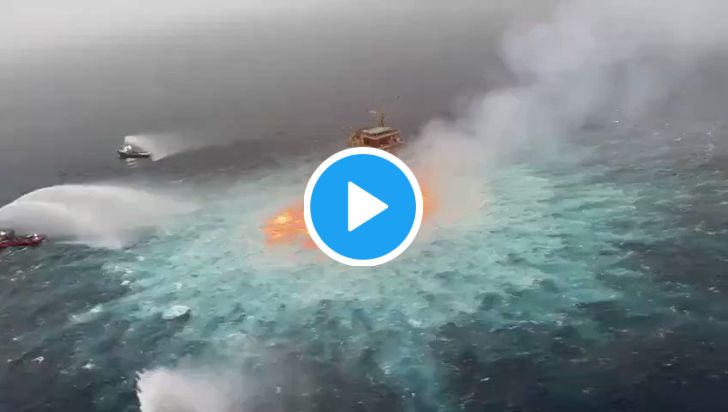The Climate Emergency is Now
The Pacific Northwest of the United States—known as a lush, rainy region, temperate even in summer—is experiencing the worst heatwave on record.
Robinson Meyer, writing for The Atlantic, puts it succinctly:
Portland’s hottest three days on record have been the past three: The city broke its all-time record on Saturday (108 degrees Fahrenheit), smashed it on Sunday (112 degrees), and broke it again yesterday (116 degrees).
Amid such extreme heat, trolley cables melted and public transit shut down. Ice cream shops had to close, because temperatures inside were too hot for commercial freezers and for the human body.
The village of Lytton, British Columbia, set all-time heat records for all of Canada, with temperatures rising above 121ºF, and then suffered a catastrophic wildfire, which has destroyed nearly all of the town. Across the northern Pacific coast of North America, heat-related deaths have surged to historic levels.
Meyer warns of the way such heat sneaks up on us:
Extreme heat is colorless, odorless, and silent; like heart disease, its reality seems abstract until it happens to you. Then it kills. In most years, heat is the deadliest type of weather event in the United States. At least 600 and possibly as many as 1,500 Americans die each year of heat-related disease, although the real numbers may be higher because all-cause mortality rises during heat waves.
So extreme heat far outside historic norms, even for a few days, is a real threat to human safety and wellbeing. But record heat is not only happening in this one region, as a singular anomaly. In Jacobabad, Pakistan, temperatures have reached even higher, hitting 52°C (126°F)—described as “too hot for humans”.
Meanwhile, mountain glaciers are shrinking. That means they store less fresh water; hotter weather also means runoff, storm systems, and flood events, bring faster, more intermittent flows of water, which are harder to capture and utilize. Watersheds and ecosystems, and by extension, our food systems, are at risk.
In Minnesota, the land of 10,000 lakes—blessed with some of the highest levels of fresh water anywhere on the planet—100% of the state is now “abnormally dry”, and 82% is experiencing drought conditions. More than 11% is experiencing “severe drought”.
Writing in The New York Times, Michael Mann and Susan Joy Hassol trace the connections between climate change and the catastrophic heatwave. Global heating is changing the dynamics of planetary systems, and making events like the record-shattering heat dome more likely:
By decreasing the contrast in temperature between the cold pole and warm subtropics, the amplified warming of the Arctic causes the jet stream to slow down and, under the right circumstances, like the ones prevailing now, settle into a very wiggly and rather stable configuration. That, in turn, allows very deep high pressure centers, like the current heat dome, to remain locked in place over a region, as it is over the Pacific Northwest.
Both Hassol and Mann have talked to Earth Intelligence about the importance of understanding the science, talking honestly about these connections with others, and recognizing that climate disruption is too existential to go unaddressed. We need to learn to apply climate science insights in high-level policy and investment decisions, but also in our day-to-day lives.
Globally, heatwaves are becoming more frequent, more intense, and longer in duration. We are seeing increasing levels of threat to human health, infrastructure, and to the security of vital human systems for delivery of food and water.
Where can one go? Everywhere on Earth is affected by climate disruption, because the climate is a planetary system. Tim Dickinson admits it was “naive” to move to Portland thinking it was climate safe. He explains:
In the past year, climate-change-amplified emergencies have twice forced us to seek shelter in our basement for days at a time.
In March, Rachel Kyte—Dean of the Fletcher School at Tufts University and a former World Bank Vice President and Special Envoy for Climate Change—told Earth Intelligence that this century’s diplomats “have to have the courage to face the complexity” of multifaceted human security challenges like climate change and COVID. She explained:
you can’t self-isolate from a pandemic; you can’t self-isolate from sea level rise and from extreme weather events as a result of climate change.
Addressing global sustainability challenges requires both science and solidarity. It is illogical to continue investing in ways that generate this level of damage and destruction. These days have also given us a stark visual metaphor, as a drilling industry accident set the ocean on fire:
Given the history of human experience, certain things should not happen to natural systems. The ocean should not be on fire, nor should the Arctic. This is why Dr. Katharine Hayhoe describes the worsening climate challenge as “Global Weirding”. The ocean on fire is a relevant visual metaphor for climate change, because:
it was preventable;
natural systems should not behave like this;
the danger demands an urgent response.
We are now living through an always active climate emergency.
Like a hurricane, there will be moments of apparent safety, when we are in the eye of the storm, but the storm will hit again. We need to do everything we can to accelerate the decarbonization of economies around the world, and to adapt our infrastructure, policy, everyday practice, and investment decisions, so they build resilience to provide for the wellbeing of human beings and the systems we depend on to sustain life.




